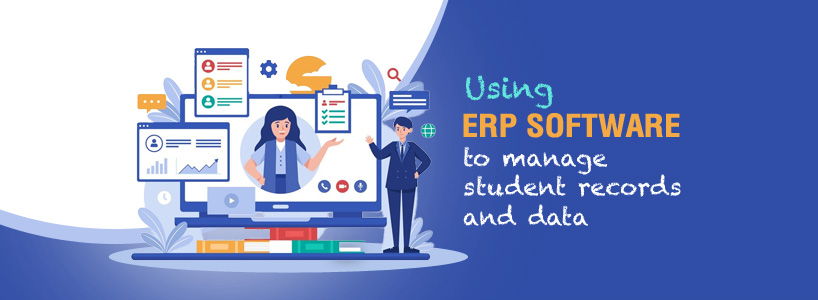Juggling mountains of paperwork? Struggling to keep track of student data across different departments? In today's tech-driven world, educational institutions are increasingly turning to Enterprise Resource Planning (ERP) software to revolutionize student record management.
ERP software acts as a central hub, integrating various functionalities like admissions, attendance, academics, and financials into a single platform. This not only saves time and resources but also fosters a more efficient and data-driven learning environment.
Here's how ERP software can transform student record management:
Centralized Database: Say goodbye to scattered files and overflowing folders! ERP software creates a secure, centralized database for all student information. Demographics, academic transcripts, attendance records, fee payments everything can be accessed and updated in real-time from a single source. This eliminates duplication of efforts and ensures consistent, accurate data across departments.
Streamlined Admissions Process: The admissions process can be a tedious affair, especially for larger institutions. ERP software automates tasks like application form management, document verification, and fee collection. This translates to faster processing times, improved communication with applicants, and a smoother transition for new students.
Effortless Attendance Tracking: Gone are the days of manual attendance registers. ERP software integrates with biometric systems or online attendance portals for quick and accurate attendance recording. Parents can receive real-time updates on their child's attendance, allowing for early intervention if needed.
Enhanced Grade Management: ERP software provides a user-friendly gradebook for teachers, enabling them to record and track student performance effortlessly. Parents and students can access progress reports online, fostering better communication and transparency. Additionally, ERP software can be used to generate insightful reports that highlight learning trends and identify areas for improvement.
Improved Communication and Collaboration: ERP software facilitates seamless communication between teachers, students, and parents. Announcements, assignments, and feedback can be shared electronically, keeping everyone informed and engaged. Secure messaging features also allow for personalized communication between teachers and students.
Data-Driven Decision Making: ERP software generates comprehensive reports on student performance, attendance patterns, and resource allocation. This valuable data empowers educators and administrators to make informed decisions regarding curriculum development, resource allocation, and personalized learning strategies.
Investing in student data security: It's important to remember that student data is highly sensitive. When choosing an ERP software provider, ensure they prioritize robust security measures to safeguard this information. Look for features like access controls, data encryption, and regular backups.
The Future of Education: Data-Driven and Efficient
By leveraging ERP software, educational institutions can transform from paper-based chaos to a data-driven ecosystem. This not only streamlines administrative tasks but also empowers educators to focus on what truly matters fostering a stimulating and enriching learning environment for their students.
Ready to explore the benefits of ERP software for your school? Consider researching popular options like Student Information System (SIS) or Learning Management System (LMS) . With the right tools in place, you can unlock a world of possibilities and create a more efficient and effective learning experience for everyone.
